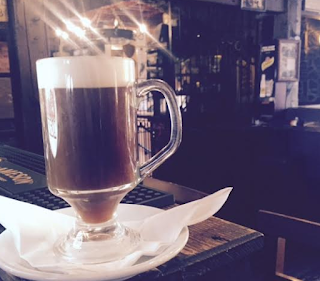Alice de Kyteler - Witch, Poisoner or Entrepreneur?
On a day in 1280, Alice de Kyteler was born in Kyteler’s House, Kilkenny to wealthy Norman parents.
Forty four years later, in 1324, she fled to England to escape being burned as a witch and in July of that year, her property, including Kytelers Inn was confiscated.
In the intervening years Dame Alice had married four times, has been Mistress of Kytelers Inn and had become a central figure in a battle between the Church and the Temporal Power in Ireland.

He first husband was William Outlawe, a local banker and they had a son, also called William, who was to feature strongly in the saga of her life. Her husband took ill and died suddenly within a few years of marriage and shortly afterwards Alice married her second wealthy husband, Adam de Blund of Cullen who soon also died suddenly and mysteriously. Having inherited two substantial fortunes, the now very wealthy Alice married Richard de Valle and the pattern continued with his early, sudden and mysterious death.
It was the fourth husband of Kilkenny’s ‘Merry Widow’ however who unwittingly began a chain of events that would lead to Alice being convicted on charges on witchcraft before an ecclesiastical court. Some years after his marriage to Alice, landowner Sir. John de Poer showed signs of illness. His hair and nails fell out and he became weak and sickly. Shortly before he succumbed to death, he changed his Will to the benefit of Alice and her son William, an act which resulted in anger and resentment among his other family members. Armed with rumours (which may have been false and inspired by local jealousy), they brought charges of witchcraft and sorcery against Alice before the English-born Franciscan Bishop of Ossory, Richard de Lederer.
They claimed that Alice had ‘bewitched’ her husband and forced him to change his Will. His Lordship convened a Court of Inquisition which included five Knights and several Noblemen which heard evidence that Alice headed a coven of witches and had sex with a demon called Artissen, who is sometimes depicted as Aethiops, the mythical founder of Ethiopia.
What followed next was a legal and political battle in which Bishop Lederer tried, but failed, to get the Temporal Authority to arrest and condemn Alice, her son William Outlawe and several of her friends and servants. The Bishop was himself arrested and imprisoned in Kilkenny jail, but on his release he continued his campaign, demanding that Alice appear before him. She wisely refused and promptly left for England, returning a year later to Dublin where she urged the Archbishop to condemn the Bishop of Ossory for unlawfully excommunicating her. A showdown between the Commissioner and Bishop Lederer took place in Dublin and ended with the Bishop returning to Kilkenny from where he demanded that Alice be arrested. She heard about the request and promptly returned to England.
The Kilkenny Witchcraft Trials did however take place.

William Outlawe was convicted and ordered by Bishop Lederer to attend three Masses every day and to give alms to the poor. This light sentence was in sharp contrast to the torture meted out to less wealthy friends of Alice, including her maid Petronella who was tortured, whipped and finally burned at the stake.
Alice disappeared from history following her second escape to England, but her memory lives on in folklore.







